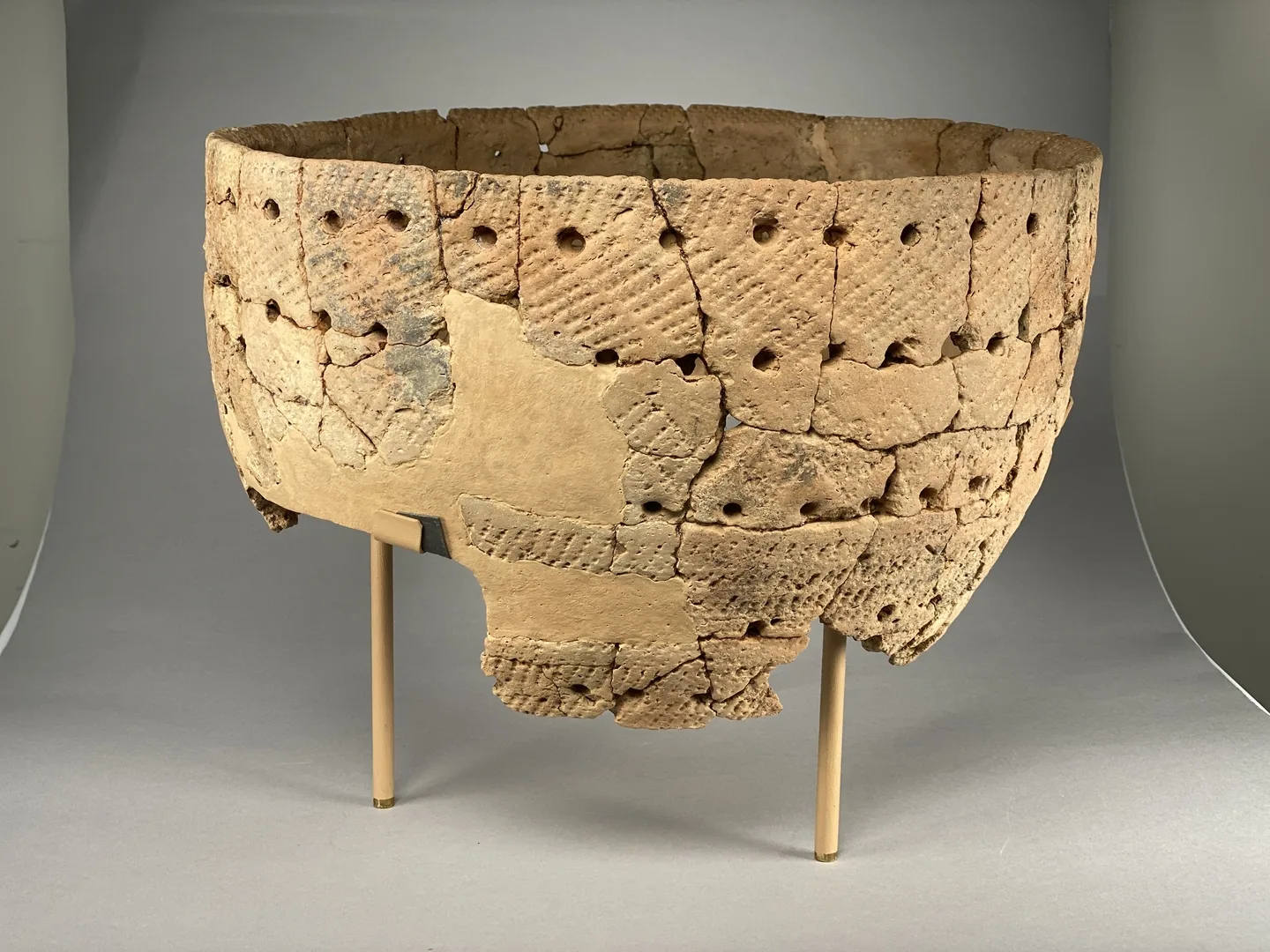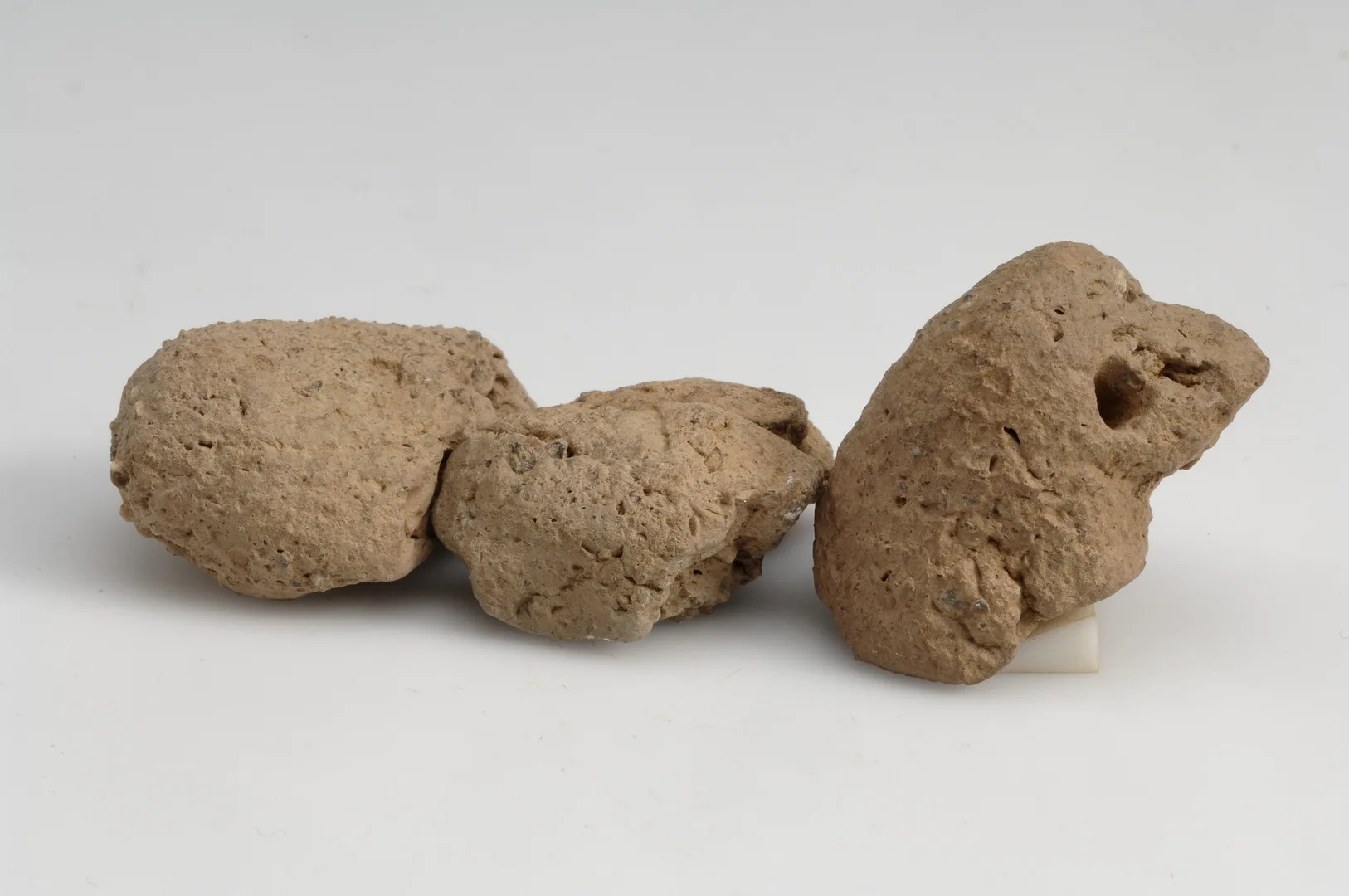Lillberget – a Comb Ware site in Sweden
Stone Age
12,000 BC – 1700 BC
Bronze Age
1700 BC – 500 BC
Iron Age
500 BC – AD 1100
The first farming communities emerged in southern Sweden, while around the same time in Norrland, northern Sweden, the earliest evidence of pottery from that region appeared. This pottery was not of the same type as in the south but belonged instead to the Comb Ware tradition. Originating among hunter-gatherer-fisher communities around 5200 BC, Comb Ware spread widely and is known from northern Norway, Finland, Russia, and the Baltic region.
In Sweden, Comb Ware has only been found at a handful of sites in Norrbotten. The largest quantity discovered so far comes from the now well-known site of Lillberget, outside Överkalix.
Lillberget was excavated in several campaigns during the 1990s, and radiocarbon dating shows the site was in use between roughly 3900 and 3600 BC. Pottery was the most common find. The vessels are decorated with pits and impressions made with a toothed comb stamp. Painted ceramics were also present.
In addition to pottery, bifacial, almond-shaped arrowheads typical of the Comb Ware culture have been found, further linking Lillberget to this cultural complex.

Comb Ware vessel
An island on the coast
Today, Lillberget lies about 60 metres above sea level. But during the Early Neolithic, when the site was in use, it was situated on an island in a coastal bay. This location would have been ideal for seal hunting and fishing, which was confirmed by the discovery of animal bones from seals, seabirds, and fish. Moose bones have also been found.
At least eight semi-subterranean houses, low mounds indicating ancient dwellings, have been identified at the site, four of which have been archaeologically investigated. These semi-subterranean houses, visible above ground even today, are typical of prehistoric settlements in northern Sweden.
Other well-known examples of such sites include Vuollerim, an inland site in Norrbotten dated to around 4000 BC, although no Comb Ware has been found there. Another is Bjästamon, near Örnsköldsvik, where the semi-subterranean houses date to the later Middle Neolithic and the early late Neolithic.
Trade and long-distance connections
Despite the time difference, Lillberget and Bjästamon share several notable features, including the discovery of copper. Both coastal sites have yielded copper artefacts, among the oldest metal objects known in Sweden. Amber is also found at both sites, along with graves.
Excavations at Lillberget revealed a large burial pit containing skeletal remains. The deceased had been placed on a layer of red ochre and sand. A dark, greasy layer above the bones was interpreted as the remains of an organic covering, possibly a hide laid over the body. At the foot of the burial were several large stones and a flat slate slab laid across the lower legs and feet.
Grave goods included sherds from five to six ceramic vessels, an amber bead placed by the head, and a retouched flint tool. Several unusual objects were also found near the grave, and the surrounding area was interpreted as a burial area with traces of ritual activity.
These include a hearth with large quantities of animal bones, an amber pendant shaped like a curved knife found near the grave’s foot end, another amber bead, and a clay figurine thought to represent a seal.

Seal figurine
Lillberget stands out as a site with both local features and exotic elements, a picture reinforced by the richness and diversity of the finds. The copper artefact is one indicator of long-distance connections, but so are the flint tools.
Since flint does not occur naturally in either Finland or most parts of Sweden, the material must have been imported. Both South Scandinavian flint and Carboniferous Russian flint have been found, indicating that these networks extended in widely different directions. The amber, also a non-local material, adds to the evidence for extensive trade contacts.
Most of the stone material used at the site, however, comes from more local sources: quartz, greenstone, and slate.
After excavation, fragments of one vessel found in close proximity were reassembled. The result is a large and finely made pot, fully decorated with rows of pits pressed into the clay using a stick. These pits either cut through or sit between horizontal bands of slanted comb-stamp impressions.




